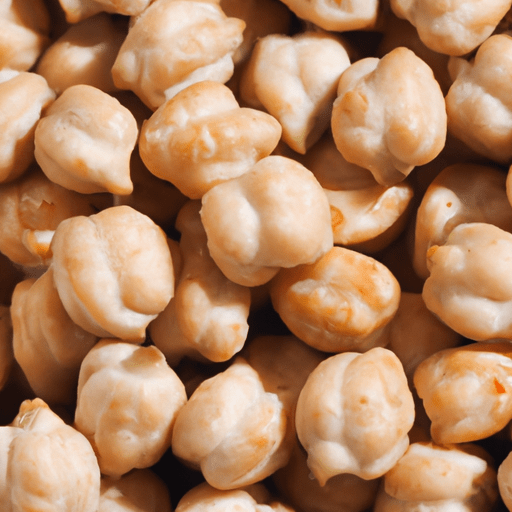The Versatile Garbanzo Beans: A Delicious and Nutritious Ingredient
Garbanzo beans, also known as chickpeas, are a popular legume that is beloved by many cultures around the world. With a rich and nutty flavor, a creamy texture, and a plethora of health benefits, these little beans have become a staple in many kitchens. In this blog post, we will explore the various ways garbanzo beans can be used in cooking, their nutritional value, as well as some interesting history and facts.
Taste and Texture
Garbanzo beans have a distinct flavor that can be described as earthy, nutty, and slightly buttery. When cooked, they have a satisfyingly creamy texture that lends itself well to a variety of dishes. This combination of taste and texture makes them a versatile ingredient in both vegetarian and non-vegetarian cuisines.
Common Uses in Cooking
Garbanzo beans can be enjoyed in a variety of ways. Here are some common uses:
Hummus
Hummus, a Middle Eastern dip, is perhaps the most popular use for garbanzo beans. Blended with olive oil, tahini, garlic, and lemon juice, garbanzo beans create a creamy and flavorful dip that pairs well with pita bread, vegetables, or even as a spread on sandwiches.
Salads
Adding garbanzo beans to salads not only lends a delicious taste but also provides a boost of protein and fiber. They can be used in both cold and warm salads to add substance and texture. Try tossing them with fresh vegetables, herbs, and a zesty dressing for a filling and nutritious meal.
Curries and Stews
Garbanzo beans can be a hearty addition to curries and stews. Their ability to absorb the flavors of spices and other ingredients makes them a perfect match for Indian, Mediterranean, and North African-inspired dishes. Whether simmered in a rich tomato-based sauce or cooked with coconut milk and aromatic spices, garbanzo beans bring depth and substance to any curry or stew.
Snacks and Appetizers
Roasted garbanzo beans, also known as chickpea snacks, are a healthy and flavorful alternative to traditional snack options. They can be seasoned with various spices, such as paprika or cumin, and roasted until crispy. These crunchy little bites make for a satisfying and guilt-free snack.
Nutritional Value
Garbanzo beans pack a powerful nutritional punch. They are an excellent source of plant-based protein, making them a great choice for vegetarians and vegans. In addition, they are rich in dietary fiber, which aids in digestion and helps maintain a healthy gut. Garbanzo beans also provide essential minerals like iron, magnesium, and potassium, as well as vitamin B6 and folate.
History and Interesting Facts
Garbanzo beans have a long history dating back thousands of years. They are believed to have originated in the Middle East and have been consumed in various forms throughout history. In fact, evidence of chickpea cultivation has been found in archaeological sites dating back to 7500 BCE!
Did you know that roasted chickpeas were used as a coffee substitute during World War II in some countries? Grounded chickpeas served as a makeshift caffeine alternative when coffee supplies were scarce.
In conclusion, garbanzo beans are an incredibly versatile ingredient that can enhance the flavor and nutrition of any dish. Whether used in traditional dishes like hummus and curries or as a protein-packed addition to salads and snacks, these beans are a tasty and healthy choice. So go ahead, explore the wonderful world of garbanzo beans and unleash your culinary creativity!
Garbanzo Beans
Origin: Garbanzo beans, also known as chickpeas, have been cultivated for thousands of years and are believed to have originated in the Middle East. They were an important food crop in ancient Egypt, Greece, and Rome.
Common uses: Garbanzo beans are a versatile legume and are used in various cuisines around the world. They are a key ingredient in dishes such as hummus, falafel, and Chana Masala. They can also be roasted for a crunchy snack or used in salads, soups, and stews.
Nutritional benefits: Garbanzo beans are an excellent source of plant-based protein and dietary fiber. They are also rich in essential minerals such as manganese, iron, and folate. Moreover, they provide a good amount of vitamins like vitamin B6 and vitamin C. Garbanzo beans are low in fat and contribute to a balanced diet.
Unique properties: One unique property of garbanzo beans is their ability to hold their shape and texture well during cooking, making them ideal for use in a range of dishes. Additionally, chickpea flour, which is made from ground garbanzo beans, is gluten-free and can be used as a substitute for wheat flour in certain recipes.
Historical significance: Garbanzo beans have been a staple in many cultures for centuries and have played an important role in various traditional dishes. They were also used medicinally by ancient civilizations for their perceived health benefits. Today, they continue to be highly valued for their nutritional profile and culinary versatility.




Use the share button below if you liked it.
It makes me smile, when I see it.